Printer-friendly .pdf version of this page.
Introduction
Late blight is a notorious disease that is often associated with the Irish Potato Famine, yet even today it remains a destructive disease. It causes fruit rot and plant death on tomatoes and potatoes. Due to its ability to travel long distances and destroy entire fields, growers need to know how to diagnose and manage the disease.
Causal Agent
Late blight is caused by the water mold Phytophthora infestans. The pathogen reproduces asexually in the United States. These asexual spores cannot overwinter without plant tissue, so the main sources of inoculum are contaminated plant debris/tubers that were improperly disposed, volunteer plants growing from infected tubers, transplants, and compost piles. However, once an outbreak occurs the pathogen can rapidly infect surrounding fields.
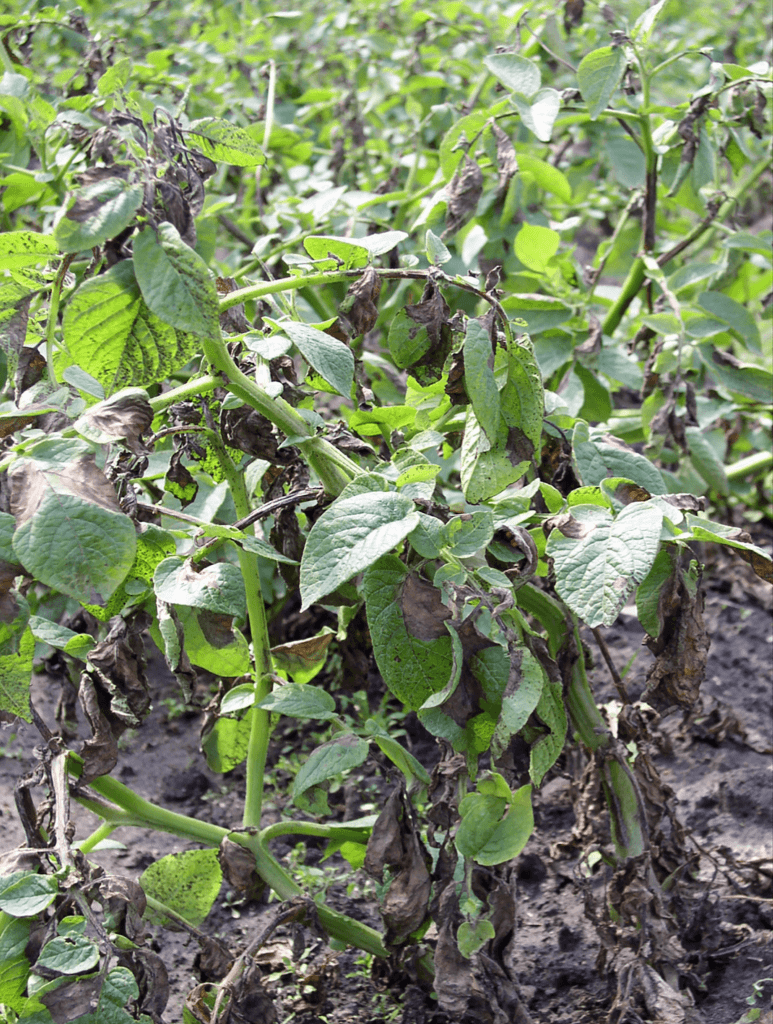

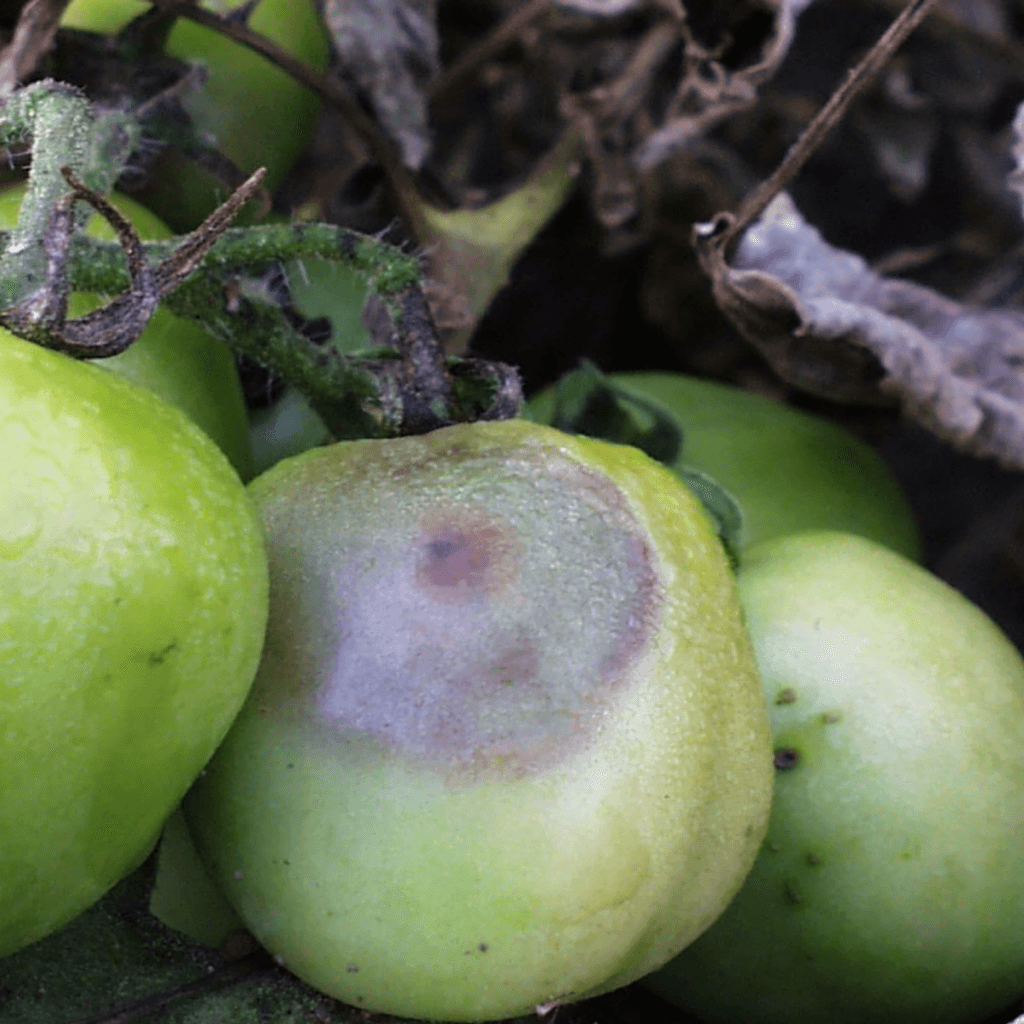
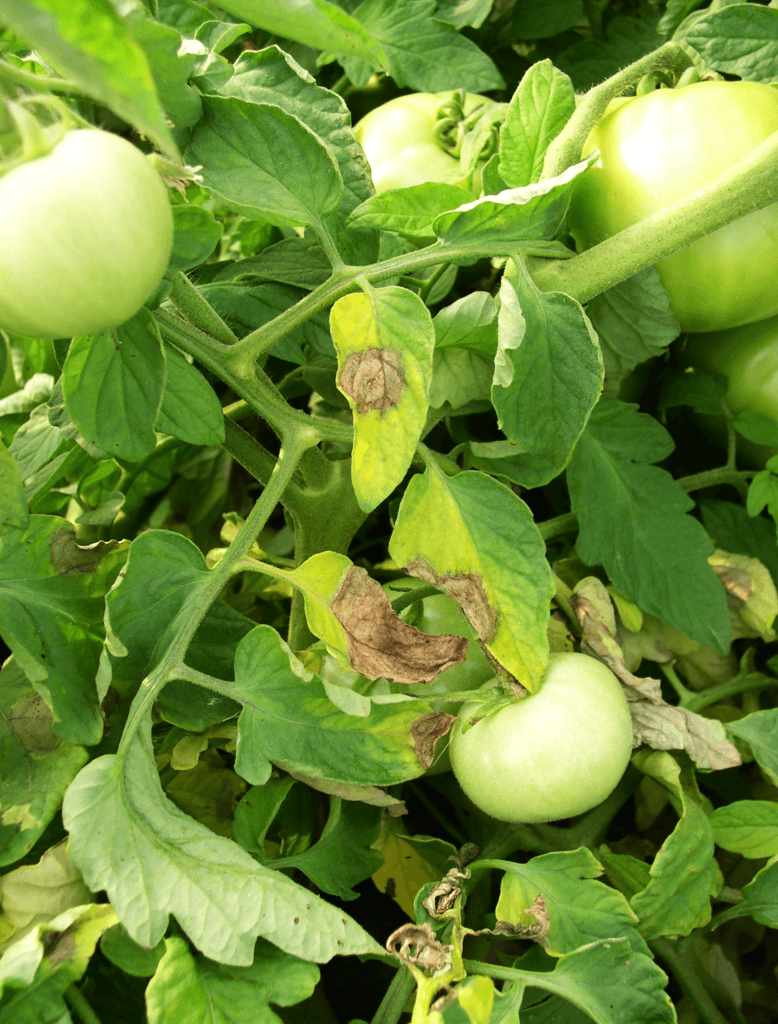
Symptoms
Phytophthora infestans infections produce characteristic symptoms that can form on the leaves and/or stems of tomato and potato plants. Both plants display similar symptoms which consist of dark lesions surrounded by white sporulation or ‘fuzz’ under humid/damp conditions but may appear just as dry dark lesions under dry conditions. Therefore, to diagnose late blight under dry conditions, place the infected sample (i.e. leaf) in a damp zip-lock bag for a day to see if white sporulation appears.
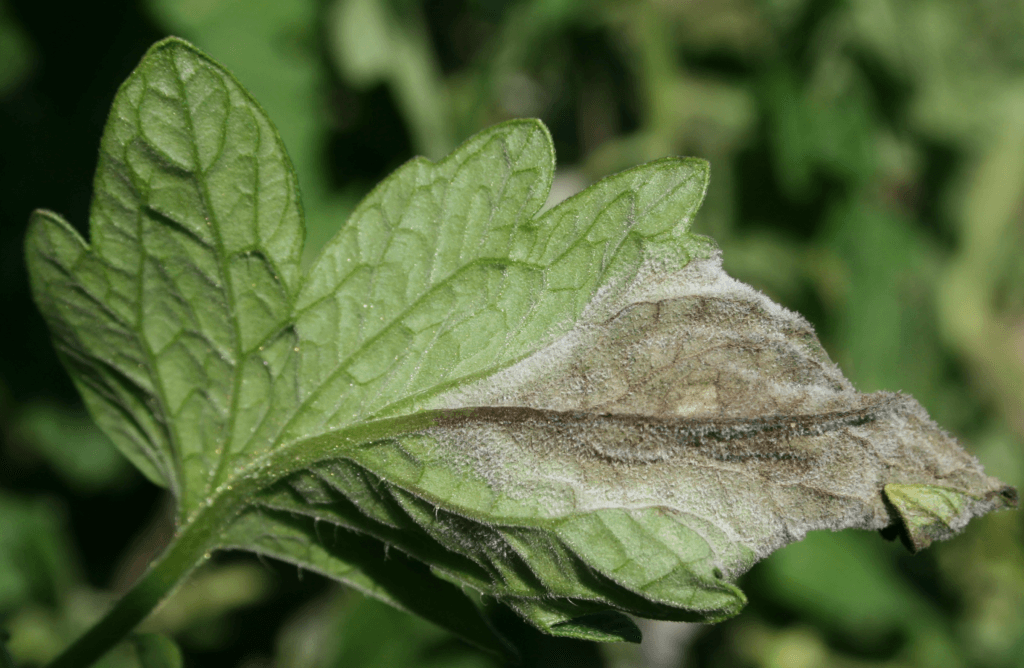
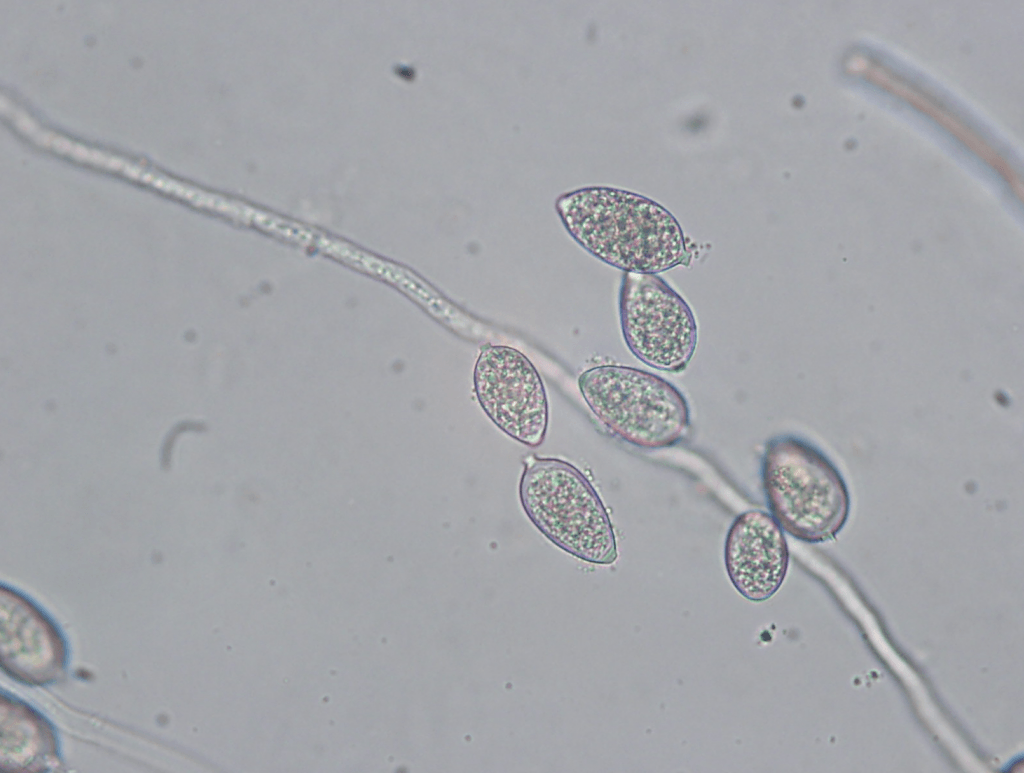
How the pathogen spreads
Under ideal environmental conditions (i.e. high humidity/rainfall) thousands of sporangia develop, which then are aerially dispersed several miles. The spores can remain viable for several hours depending upon environmental conditions, and in warmer and in warmer weather can germinate to directly infect the plant. However, upon favorable cooler conditions (i.e. wet leaf surfaces and temperatures between 60-70ᵒ F) the sporangia will release swimming spores (zoospores) that invade the host plant. Symptoms become evident 3-6 days after infection of the leaf. Potato tubers can become infected when rain washes zoospores into the soil. Unfortunately, the pathogen is wind dispersed, making it difficult to quarantine infected field.
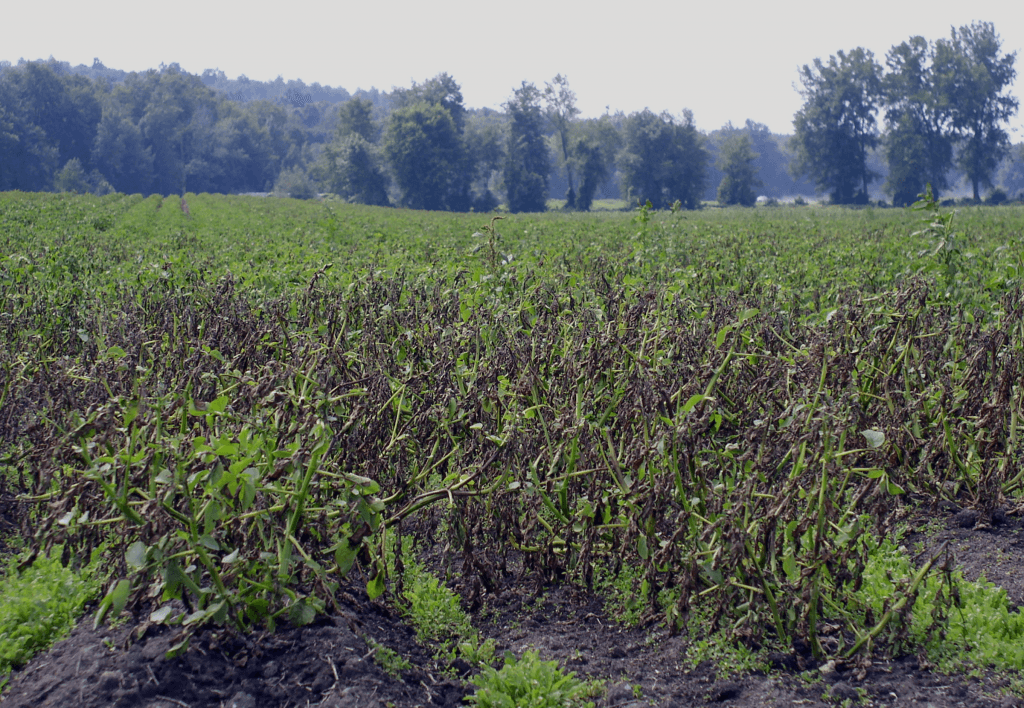
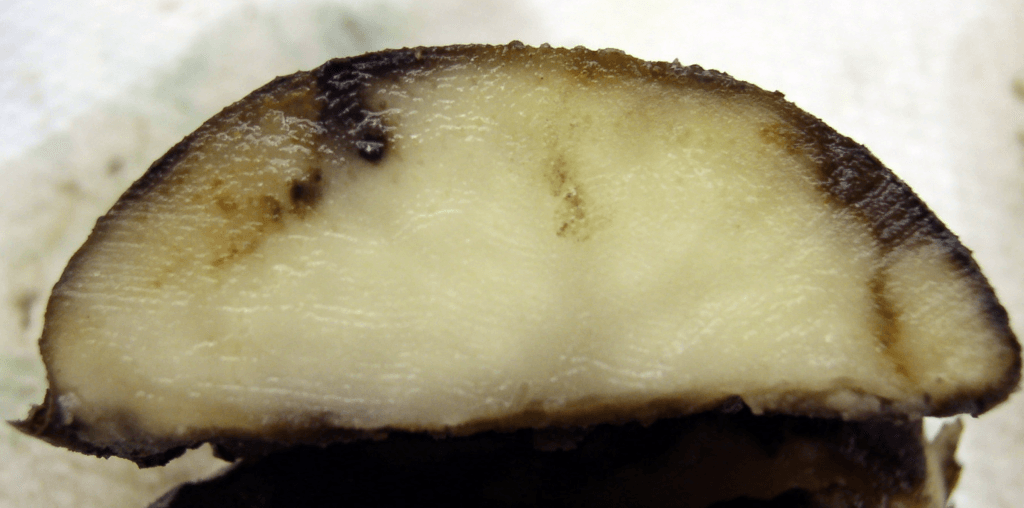
Management
Take preemptive measures to limit the spread of late blight:
- Planting resistant varieties: There are potato and tomato varieties that are resistant to late blight, however most are not.
- Sanitary practice: Properly dispose of infected tubers by burying them if possible. The pathogen will survive in tubers or potentially in tomato fruit that are in a cull pile and can be a source of inoculum the next year. Rotate away from solanaceous crops for three years.
- Forecasting: Frequently check for late blight outbreaks throughout the U.S. at usablight.org.
- Remaining vigilant/Scouting: Initial symptoms will most likely be observed in low-lying areas of the field, areas with continual shade, or along hedgerows. Therefore, be sure to pay particular attention to these vulnerable areas. If symptoms are noticed in localized areas, take swift action to remove those plants and their surrounding healthy neighbors via disking or flaming.
- Applying chemical treatments: To find approved fungicides, consult the Cornell Integrated Crop and Pest Management Guidelines for Vegetable Crops available at cce.cornell.edu.
More information
- For more information, please contact: Chris Smart – cds14@cornell.edu
- This page was created by Martha Sudermann – mas835@cornell.edu


